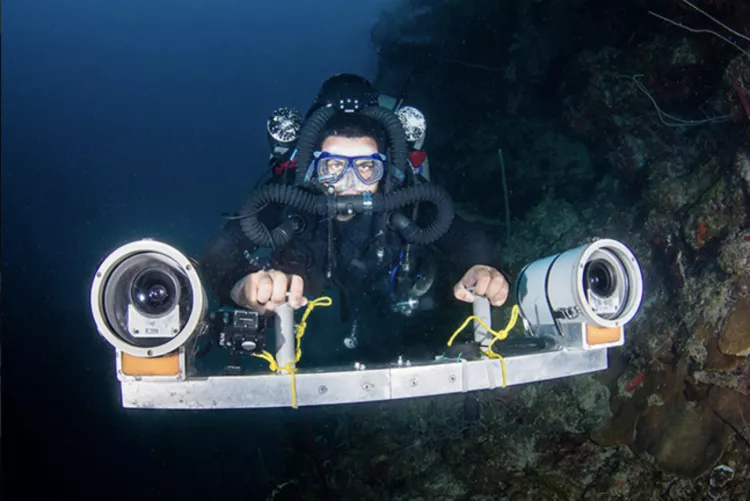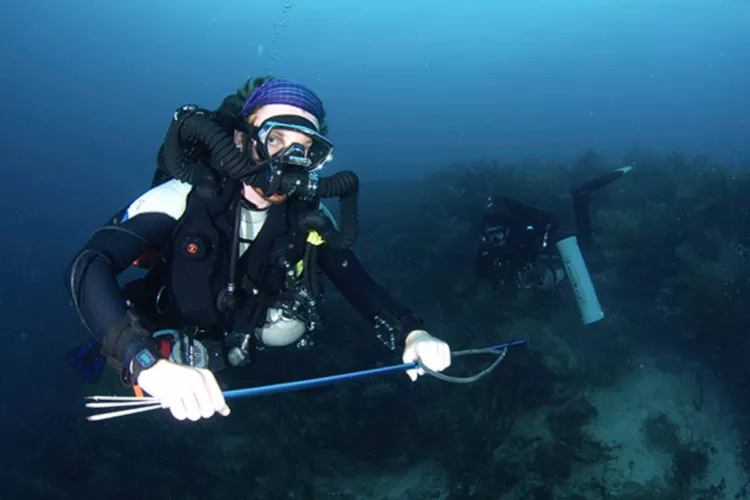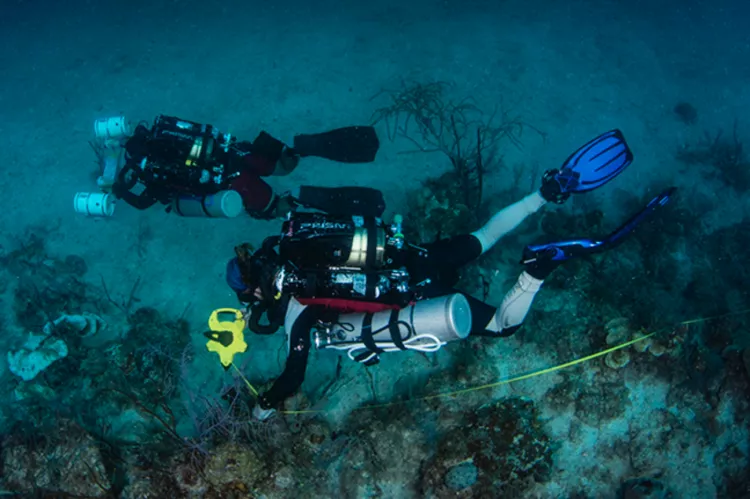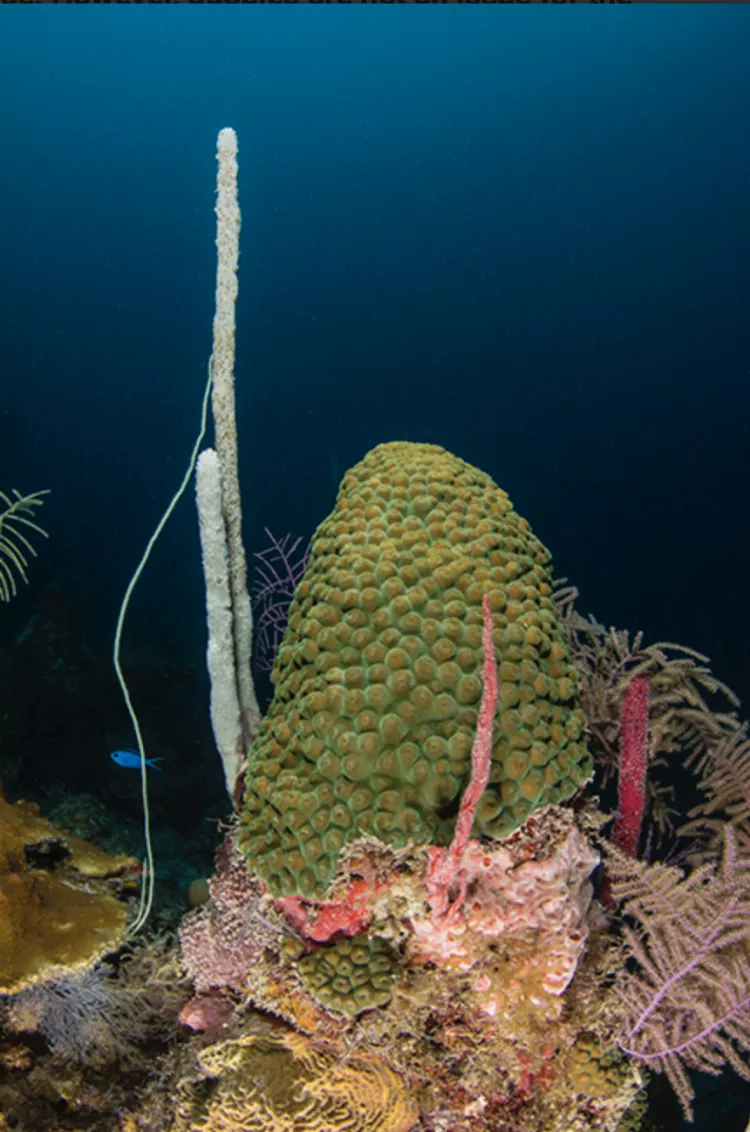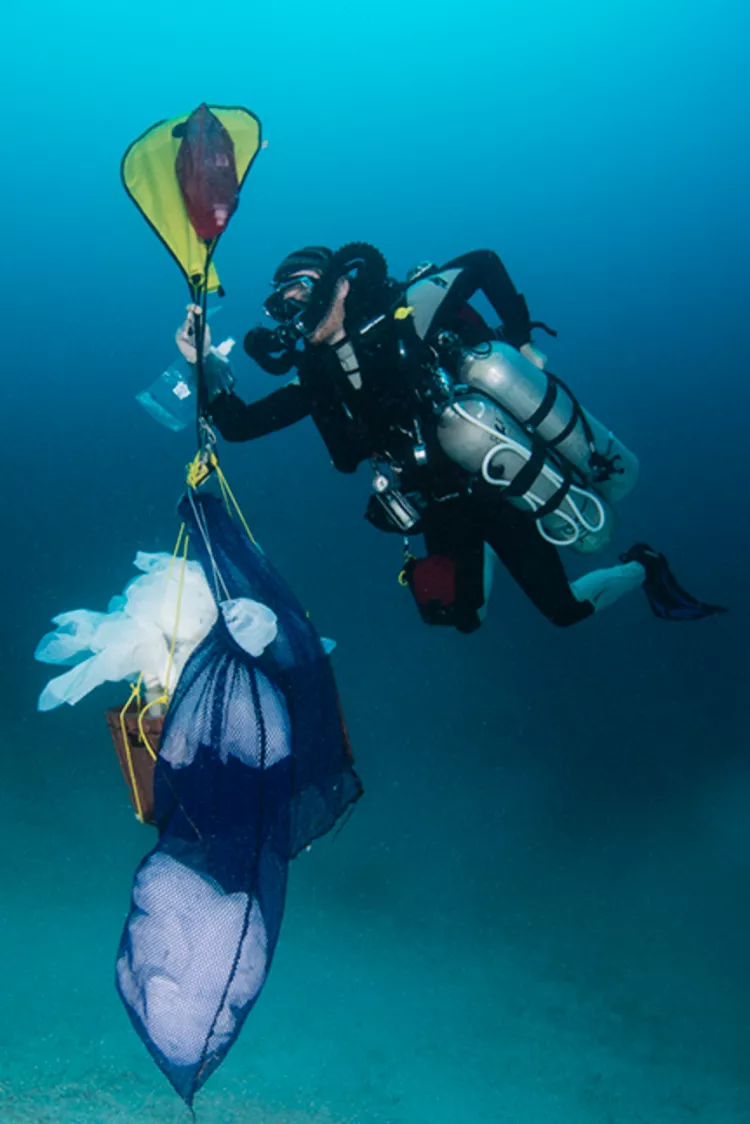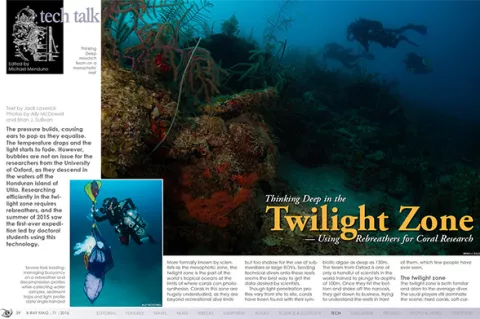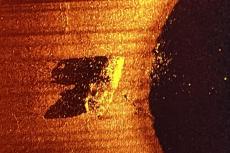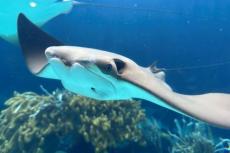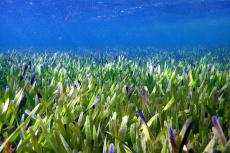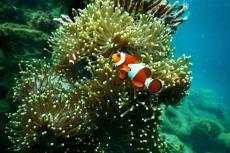The pressure builds, causing ears to pop as they equalise. The temperature drops and the light starts to fade. However, bubbles are not an issue for the researchers from the University of Oxford, as they descend in the waters off the Honduran island of Utila. Researching efficiently in the twilight zone requires rebreathers, and the summer of 2015 saw the first-ever expedition led by doctoral students using this technology.
Contributed by
Factfile
Jack Laverick is an IANTD Trimix CCR diver currently doing research on benthic communities found in mesophotic coral ecosystems.
He is based in the Department of Zoology at Oxford University and is part of the Environmental Research Doctoral Training Partnership funded by the Natural Environment Research Council (NERC).
More formally known by scientists as the mesophotic zone, the twilight zone is the part of the world’s tropical oceans at the limits of where corals can photosynthesise. Corals in this zone are hugely understudied, as they are beyond recreational dive limits but too shallow for the use of submersibles or large ROVs. Sending technical divers to these reefs seems the best way to get the data desired by scientists.
Though light penetration profiles vary from site to site, corals have been found with their symbiotic algae as deep as 150m. The team from Oxford is one of only a handful of scientists in the world trained to plunge to depths of 100m. Once they hit the bottom and shake off the narcosis, they get down to business, trying to understand the reefs in front of them, which few people have ever seen.
The twilight zone
The twilight zone is both familiar and alien to the average diver. The usual players still dominate the scene: hard corals, soft corals, sponge and algae. Some of the species of fish and invertebrate in this zone are the same as those in shallower reefs.
Given that, the flavour of the reef changes. Massive brain corals give way to stacked shingles of fragile plating corals from the family Agariciidae. Tall skinny devil’s whip soft corals can rise from the bottom in large numbers like grasping tendrils. The animals on the reef tend to get larger as they are further from fishing pressures. This ghostly scene, with giant fish, is rendered all the more eerie by the light.
Light drops exponentially with depth, meaning 100m may be surprisingly dark in comparison to 40m. Almost every colour is absorbed except blue. The deep waters are still, meaning little is suspended in the water resulting in breath-taking visibility. These factors combine to make a scene, framed in clear tones of midnight blue fading into an inky blackness, with rising stalks and scrolling sheets of coral casting unusual shadows.
Looking up, one sees a dazzling beam of sunlight stretching down from the now inaccessible surface. Floating motionless and silently on a rebreather on these reefs is as close to a feeling of being on an alien planet as I can think of. These reefs are unexplored, and there is a sense of excitement as one starts viewing a reef no human eyes have ever seen.
Scientific meets technical diving
Task loading refers to the number of things that may be swimming around the mind of a diver at any given moment. A good dive plan will try to manage this by setting appropriate targets and preparing well on the surface. If you have ever been on a dive holiday with a divemaster and the whole experience felt effortless, then the dive staff managed this for you. All the little jobs needed to make diving happen were taken care of, and any worries were dispelled, leaving you free to watch that moray eel or hunt for nudibranchs.
Technical diving is a very different beast. Individuals must be responsible for their own dive planning and be comfortable in the mission and the equipment they will take.
The reality of technical diving is an added level of risk. Tissue saturation levels rise to points requiring mandatory decompression stops. Avoiding a bend requires gold standard buoyancy control, excellent gas management and a thorough knowledge of one’s limits. On the dive, technical divers must be fully aware of their environment, decompression obligations and future time commitments, plus the welfare of the team. This is diving to the next level.
Most marine scientists hold recreational dive qualifications, but this does not mean that task loading is alien to them. Though the depths and dive times are nothing to break headlines, the equipment and presence of mind required to conduct science under the sea can be extraordinary. Whether swimming behind a bulky camera rig increasing drag, or using a school of lift bags to manoeuvre heavy traps into place, the fitness and buoyancy control of a scientific diver is heavily tested. Often, there is no rule book and methods are worked out by trial and error.
While managing the job at hand (and their dive profiles), scientists under the sea may also need to consider the samples already collected or the added cost in gas consumption of moving equipment and working instead of relaxing.
The bane of a marine biologist, however, is getting enough hours on the study system. Lab-based scientists, wishing to make quick progress, can pull a 60-hour week if need be, and have results to show for their hardship. Due to the rules of dive planning, marine biologists may be lucky to get six hours of bottom time with their system per week. Time management becomes critical.
Thinking Deep team
Enter the “Thinking Deep” team of researchers from Oxford University, faced with an extreme task loading challenge. As if conducting science wasn’t enough to occupy a dive—collecting fragments of coral for physiology tests and video data for ecological analysis—they opted to do this at depths of up to 95m on rebreathers this past summer, incurring dive times in excess of three hours.
Lots of jobs on the bottom translated to even more on the surface. The scientists also blended gases and performed maintenance and checks on equipment, on top of their lab schedules. Food was had on the go, and often, the only pause was for sleep.
The level of dive training required to access 100m is understandably high. Similarly, to qualify for doctoral level research at the University of Oxford required the team’s dedication and curiosity. This is the rare combination that has helped to open new access and insights into the reefs of the twilight zone.
Marine conservation
The team’s interest in the twilight zone is largely focused on conservation. Research objectives are crafted to better understand how these deeper reefs affect those in the shallows we now know are threatened.
The International Society for Reef Studies released a consensus statement in 2015, ahead of the Paris climate talks, warning against the dangers of increasing temperatures and mass coral bleaching events. We are currently in the midst of a third global coral bleaching event. This is the loss of symbiotic algae from the coral, and in the past, has caused as much as 16 percent of all corals globally to die. These events are set to become more common and may prove increasingly destructive as other human impacts like sedimentation and microplastics in the ocean become more pervasive.
Thinking Deep is working closely with groups, such as Operation Wallacea and the Bay Island Conservation Association, to see whether mesophotic reefs can help shallow reefs recover. If the same corals are found shallow and deep, the extra water above may block higher temperatures and light levels that cause bleaching from reaching some populations.
In the future, the deep-living coral could provide offspring that settle and rebuild the reef in the shallows. Research is now looking at how many corals span both zones and how their reproduction and physiology differ with depth. Living deeper under lower light levels also means there is less energy for corals to use in order to survive.
Other research is considering whether the invasive lionfish populations of the Caribbean are using the deep reefs in their life cycles. If so, lionfish could hide from the culling efforts of divers and continue to damage fish populations. Scientific studies have found juvenile fish populations can drop by 79 percent in five weeks after the arrival of lionfish.
Conclusion
The ever-improving safety record of rebreather technology and the adoption of these techniques by scientists are opening doors on a new era of marine discovery. Already, records are being broken with another recent expedition recording over 10 species new to science per hour in the Philippines. With the Oxford team now asking questions based not just on what lives in the dark, but also how, we hope exciting new discoveries will continue to be made. What is clear is that we still know next to nothing about our oceans, at a time when they desperately need our help to survive. ■
The author thanks ZSL, RGS, OUEC and Operation Wallacea for funding; and Gradient Technical and Scientific Diving for support. Thanks also go to Ally McDowell and Brian J. Sullivan for photos.

